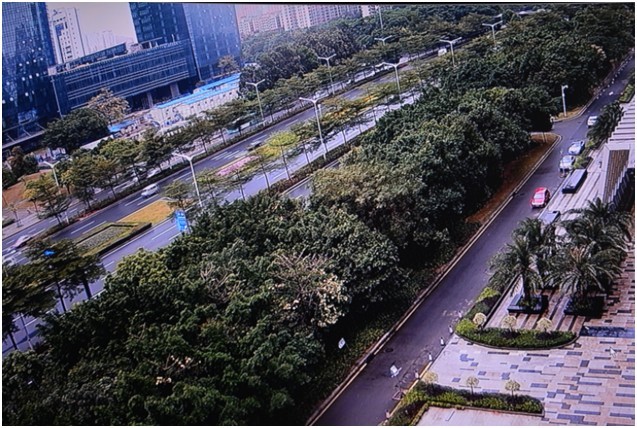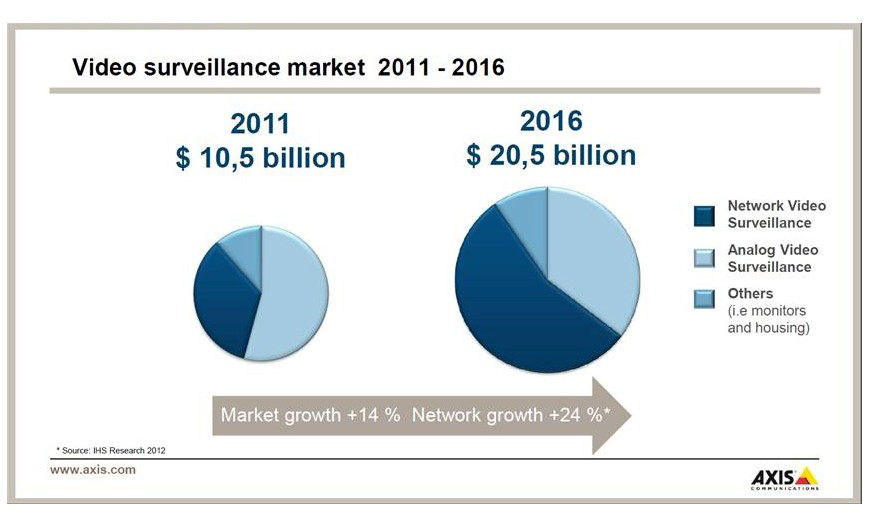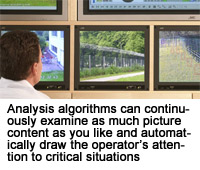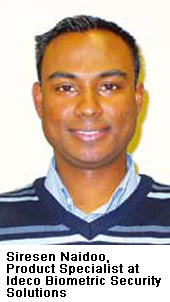India's GDP growth rate is the world's second highest, after China. With the government pushing aggressively for more liberal trade practices, India continues to attract foreign investments. The global economic meltdown may pose threats to some, but the security business in India will continue to grow as demand and awareness for security and safety increase.
India's GDP growth rate is the world's second highest, after China. With the government pushing aggressively for more liberal trade practices, India continues to attract foreign investments. The global economic meltdown may pose threats to some, but the security business in India will continue to grow as demand and awareness for security and safety increase.
According to Frost & Sullivan, the total market for electronic security solutions in India during 2008 was US$207 million. This market is expected to grow at a compound annual growth rate of 23 percent until 2012. The Asian Professional Security Association (APSA) — India Chapter — had similar projections: $248 million for size and 30 to 35 percent for growth.
On the other hand, recent research shows that a large portion of this market is still untapped, said Jagpal Singh Jagdeva, Director at Turbo Consultancy Services, rendering other more optimistic estimates like G4S' $350 to $400 million and Zicom's $500 million. "The commercial and residential markets may be going down a bit, but the government sector is rapidly growing," said Pramoud Rao, Managing Director at Zicom Electronic Security Systems.
Sectors such as services, finance, insurance, real estate, media and tourism seem particularly strong, indicating overall growth potential. In terms of electronic security, critical infrastructure, homeland security, transportation, public areas and theretail sector are the fastest growing at the moment. The banking and IT sectors also contribute to the ever-increasing security needs.
 "Public areas have the highest growth potential in developing countries," said Anil Dhawan, Senior VP of Sales and Marketing at G4S Security Services and President of APSA — India Chapter. Needs for security in shopping malls, hotels, big stadiums, railway stations, bus stops and airports, as a result, are growing fast in India.
"Public areas have the highest growth potential in developing countries," said Anil Dhawan, Senior VP of Sales and Marketing at G4S Security Services and President of APSA — India Chapter. Needs for security in shopping malls, hotels, big stadiums, railway stations, bus stops and airports, as a result, are growing fast in India.
The Central Industrial Security Force (CISF) provides security to 267 public-sector companies, which spread over several vital industries including nuclear power generation, aviation and defense, said Anand Navani, Sales Manager, Video Intelligence Solutions, Verint Systems. Security services at ports and other transportation facilities are also included. Due to cost-effective concerns, end users are looking for total security solutions that combine electronic security with manpower, physical security, said Dhawan.
"The market is expanding because people here are very intelligent and are quick in adapting new technology," said Koji Yamada, General Manager of Professional Systems Division, Panasonic Systems Asia Pacific. Infrastructure developments in highways, airports, seaports and metros have increased dramatically, said Yamada. Construction sites grew from the earlier 16 in Aand B-class cities to C- and D-class cities, said Harish Vellat, Director at ADI, creating higher demands for low-voltage, electronic security; and an organized chain of distributors is needed in order to provide quality goods and services.
 "Though growth rates for individual market segments are still under research, we can safely assume growth to be in excess of 20 percent from all these segments," said Niju Vijayan, Deputy Director, Automation and Electronics, South Asia and Middle East, Frost & Sullivan.
"Though growth rates for individual market segments are still under research, we can safely assume growth to be in excess of 20 percent from all these segments," said Niju Vijayan, Deputy Director, Automation and Electronics, South Asia and Middle East, Frost & Sullivan.
Market Characteristics
India is a huge market, with a lot of untapped opportunities and a variety of business cultures and practices. The first thing people notice is the market's extreme sensitivity to price.
Lack of user education, said Ashish Gupta, Corporate Sales Manager at Bell Securitech, is probably the main reason. Users, especially those in the private sector, tend to purchase systems based on price rather than quality because they do not have sufficient knowledge to differentiate among products.
Another factor is the ever-changing tax laws. Because of frequent changes in taxation, customers prefer a negotiated price to a fixed one so they can better adapt, said Dr. Saifuddin Bharmal, CEO at Lookman Electroplast.
 The fall in the rupee would be the third factor because it would affect the profit margin for installers. As local prices cannot vary all the time, installers have to secure their profit margins by lowering equipment cost, said Dr. Bharmal. "They are more likely to go for cheap products instead of products that come with annual maintenance," seconded R. K. Bhardwaj, General Secretary at APSA — India Chapter.
The fall in the rupee would be the third factor because it would affect the profit margin for installers. As local prices cannot vary all the time, installers have to secure their profit margins by lowering equipment cost, said Dr. Bharmal. "They are more likely to go for cheap products instead of products that come with annual maintenance," seconded R. K. Bhardwaj, General Secretary at APSA — India Chapter.
"The market might be price-conscious," remarked Prakash Prabhu, Country Manager for India at Axis Communications, "it's not driven by cheap products but by value for money." Users just want to make sure that they get the best features with the lowest price possible. "Price is the only concern for low-end products. As for mid to high-end, quality and powerful features are the deciding factors."
India is also very unique in that it is not modeled after any market structure. It does  not have an organized channel, and there is no clear-cut definition for the word "market." "The market isstill evolving, said Prabhu, and integrators sometimes act as distributors and distributors sometimes are function as installers or importers."
not have an organized channel, and there is no clear-cut definition for the word "market." "The market isstill evolving, said Prabhu, and integrators sometimes act as distributors and distributors sometimes are function as installers or importers."
Although the market today is quite cost-conscious, it wants effective solutions, said Dhawan. "Cheap electronic gadgets cannot provide suitable help or evidence in times of need," seconded Bhardwaj. Low-quality systems would require more maintenance in the long run. "You have to be very rich to buy poor or cheap systems," said Prabhu.
Product Needs
Users are starting to look for more advanced and sustainable technology at an affordable price, said Amitabh Sharma, Product Head of Video Security Products at Sony India. "There is already a noticeable trend toward deploying high-performance cameras, with add-on capabilities such as edge-level intelligence, video content analysis, audio transmission and so on."
Banks and financial institutes are willing to invest in high-tech security measures. Most large projects now require central command and control capabilities. Industrial and commercial facilities are seeking to improve their overall safety with total solutions, said Navani. "Real-estate developers have also started to include comprehensive security systems in their construction plan as a major selling feature."
Amid all the threats, the demand for intelligent video surveillance is high in verticals such as public sectors, shopping malls and office buildings, said Prabhu. "The highest crime rates are of theft and burglary."
Electronic access control systems are increasingly adopted in the corporate sector, to help achieve higher productivity and better track employees' time  management. "In segments like logistics and transportation, revenue generation can also be enhanced by state-of-the-art access control systems," said Vijayan.
management. "In segments like logistics and transportation, revenue generation can also be enhanced by state-of-the-art access control systems," said Vijayan.
Looking for proactive systems with intelligent video and remote control capabilities, said Rajesh Solanki, Managing Director at Rasan Infocom. Video analytics could convert video data into meaningful information, making security procedures more efficient. "The most important thing about a system is that it must be able to alarm the related personnel instantly when a security breach occurs," said Gupta.
High definition/megapixel, H.264 compression, video analytics and DDNS are trends in video surveillance as the migration to IP quickens. In addition, remote surveillance is becoming popular in the residential, education and health care sectors, said Prabhu. To reduce back-end workflow, intelligent software can now be embedded at edge devices for more proactive and effective on-site analysis.
Challenges
User education is the biggest challenge for everyone. When choosing a system or  solution, users and installers usually do not know what specific features would best suit their needs, let along the latest technology they could choose from. Security awareness within end users is not enough, either. "Everyone in India is keen to learn more about security systems, but user awareness is not keeping up with the pace," said Dhawan.
solution, users and installers usually do not know what specific features would best suit their needs, let along the latest technology they could choose from. Security awareness within end users is not enough, either. "Everyone in India is keen to learn more about security systems, but user awareness is not keeping up with the pace," said Dhawan.
When awareness levels are low, consultants could be an option, said Vijayan. "Users, however, must be made aware of the possible, informal alliance of consultants with specific brands, which may not always be the best-in-class solution." In addition, government purchases are often mired in long approval processes and lack transparency.
Competent system integrators are also difficult to find. "A good system integrator must be able to enable interoperability between systems and capable of software integration," said Solanki. Insufficient network infrastructure and bandwidth can also be challenging, said Varun Jain, CEO at SKJ Electronics & Systems.
Lack of security standards and regulations is another hurdle. For a huge continent like India, a clear set of standards and regulations could help security providers develop more quickly. "There's a gap which should be filled up, and one of the  ways to do this is through clearly defined standards," said Dhawan. The APSA — India Chapter is planning to take the British Security Industry Association as a model to establish standards for the Indian electronic security industry, said Dhawan. Moreover, the Indian government and corporate representatives are working together to establish a climate of sustainability and growth that will ensure progress for the next 20 years, Jagdeva said.
ways to do this is through clearly defined standards," said Dhawan. The APSA — India Chapter is planning to take the British Security Industry Association as a model to establish standards for the Indian electronic security industry, said Dhawan. Moreover, the Indian government and corporate representatives are working together to establish a climate of sustainability and growth that will ensure progress for the next 20 years, Jagdeva said.
Future Outlook
Anything considered mission critical demands attention. "The microscope is on what you have done to provide further security and safety to your employees, inhabitants and country," said Adam Rosenberg, VP of Marketing at Magal Security Systems. Explosive detection, IP-based security systems, central management software and integrated building management systems are the future trends in security. "Increase in terrorist attacks makes customers consider different and better measures for security and willing to pay more for them," said Rosenberg.
A number of international companies are looking to manufacture in India or form local alliances, added Solanki, as physical presence further helps foreign companies gain acceptance and visibility in India. More IT system integrators are entering the market as well because more systems are becoming IP-based, said Vellat. Sharma predicts that more meaningful collaboration would take place between the security and IT industries in the near future as conventional and newer applications of intelligent video surveillance are constantly emerging. "Advancements in building technology such as Web-enabled systems that allow for easy convergence and anywhere-anytime monitoring are needed," said Navani.
Luckily, the Indian market is expected to witness high domestic consumption riding on an 8-percent GDP growth, said Vijayan. "India is a market poised for  sustained growth, with ample opportunities for both local and foreign security solution companies." Although some investors are pulling out, there will be no significant impact on electronic security, said Jain. "Projects will not be shelved completely — only delayed," said Prabhu. The current economic downturn might even increase security demands as crime rates go up, making it mandatory in every segment, said Dhawan.
sustained growth, with ample opportunities for both local and foreign security solution companies." Although some investors are pulling out, there will be no significant impact on electronic security, said Jain. "Projects will not be shelved completely — only delayed," said Prabhu. The current economic downturn might even increase security demands as crime rates go up, making it mandatory in every segment, said Dhawan.
Steps are also being taken by the government as the Private Security Regulation Act 2005 gets fine-tuned and enforced. Guarding companies also have to meet certain standards and be licensed for operation. Good training and certification programs are much needed in India for installers to carry out quality installations, said Solanki.